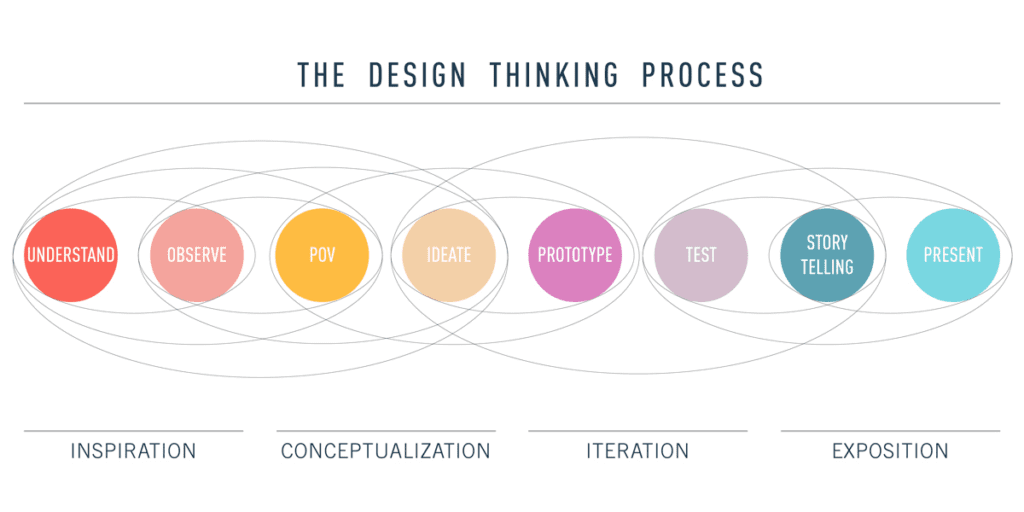UX design is like a person – it should be respectful and helpful to etch into the heart. If not, users will take off like a shot from your website or app. And we are not joking. According to Maze, 88% of visitors are reluctant to return to a site after a negative user experience, while a well-designed user interface may increase conversion rates by up to 200%.
This article is for those wanting to know more about UX services. Let’s go!
What is the aim of UX design services?
UI/UX design services aim to make software accessible and easy to use for the intended audience.
A software program that is simple, pleasurable, technically sound, and in line with corporate goals is the desired outcome of the UX designer’s work.
Also read: Instagram Subscriptions: Features, Benefits And Requirements
A step-by-step explanation of a UX designer’s work
Throughout the design process, UX designers continually evaluate their work by asking these crucial questions:
- Is the product intuitive and straightforward for users?
- Does it effectively resolve a current user issue?
- Is it accessible to a diverse range of users?
- Does it offer a positive experience that users will want to revisit?
To answer all of them positively at the end of the project, UX specialists go through these stages:
1. Empathy and research
The UX design service starts by understanding the target users through various research methods like interviews, surveys, and observations. This stage is crucial for gaining insights into user behaviors, needs, and pain points.
The information helps in creating generalized user personas that represent different segments of the user base.
After gathering data, designers synthesize the findings to define clear problem statements. This involves identifying the core issues users face and setting specific design objectives.

source: careerfoundry.com
2. Ideation
During the ideation stage, UX designers brainstorm a variety of prospective solutions. To explore different concepts, designers employ tools including mind mapping, storyboarding, and sketching. The goal is to foster creativity and provide original ideas for solving the challenges that have been identified.
3. Modeling
Low-fidelity wireframes are made by designers to show the fundamental architecture of the program. Interactive prototypes based on these wireframes are developed to replicate the user experience. These models are created using prototyping tools like Balsamiq, InVision, and Figma, which enable designers to test functionality and improve their concepts.
4. Testing
Real people participate in usability testing. Designers watch people engage with the design to pinpoint areas that need work and identify pain points. This is an iterative process where designs are improved in response to user feedback and tested again until the solution fulfills user requirements.
5. Implementing
At this stage, UI UX design services integrate with development services. Designers work closely with developers to guarantee that the design is carried out accurately. To solve any problems that may come up during development, they take part in design reviews and offer comprehensive specifications and assets.
6. Launching and monitoring
After the product launch, designers continue to monitor user feedback and performance metrics. This ongoing observation helps identify any usability issues and find areas for improvement.

source: flectone.com
Best practices of UX design services
The UX design process can vary, but certain best practices are generally followed to streamline and enhance the design.
- User-centricity. Everything in the design process should be geared towards providing solutions that are genuinely useful and meaningful to the end-user.
- Consistency. Consistency makes it easier for users to comprehend and navigate the interface through well-known and established patterns.
- Hierarchy. A clear visual and informational hierarchy helps users easily find what they need, guiding their attention to the most critical parts of the interface first.
- Context. UX designers should consider the environment and circumstances under which the product will be used, such as the device type, location, and possible distractions. This ensures the design remains functional and user-friendly in real-world scenarios.
- Accessibility. The product should be accessible to as many individuals as possible, including those with impairments. For instance, this requires building interfaces that are compatible with assistive devices and using high-contrast colors for the visually disabled people.
Reconsideration of UX solutions
Yes, the UX solution needs to be updated. Conducting UX reconsideration regularly is vital to maintaining a positive user experience.
Consider UX improvement:
- Regularly. Do regular usability testing as soon as a product is released to address any early customer concerns and comments.
- After big updates. Reevaluate the user experience (UX) whenever major additions or design modifications are made to ensure the new components work well together and improve the user experience overall.
- If something goes wrong. Keep an eye on performance metrics and user feedback at all times. A drop in user engagement or happiness is a strong indication that the user experience needs to be reviewed.
A final note
For a contemporary and effective UX/UI design, contact a qualified development UI UX design agency. By partnering with a professional team, you can receive expert UX UI design services. They will create a comprehensive design from scratch or enhance your current design through a detailed audit.
Good luck!
Sources
Unlocking Startup Success Transformative UI Design Services for Enhanced User Experiences – www.newsbreak.com

